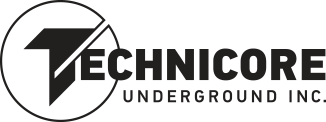The world of underground tunnelling has witnessed rapid advancements over the years, with companies like Technicore Underground Inc. leading the way with their technological expertise in executing complex projects. The ability to create new infrastructure without disrupting the surface or existing installations has become paramount, particularly in congested urban environments. Thus, the tunnelling industry has developed a diverse range of techniques and technologies that efficiently cater to varying geological conditions, project scales, and specific requirements, all the while ensuring maximum safety and minimum environmental impact.
In this comprehensive guide, we will delve into the world of tunnelling, exploring the different techniques and technologies that have revolutionized the industry. From traditional methods such as cut-and-cover tunnelling to more modern technologies like Earth Pressure Balance (EPB) and Slurry-Type tunnel boring machines (TBM), we will discuss their respective applications in today’s projects and how they add value to the industry. Additionally, we will highlight the advantages and disadvantages of each technique, giving you a better understanding of their practicality.
Traditional Tunnelling Techniques
The world of tunnelling is vast, with several methods having been developed over time. Historically, traditional methods like the cut-and-cover technique were commonly employed. Cut-and-cover involves excavating a trench in which the tunnel is constructed and subsequently covering it, as the name implies. This method is ideal for projects where the tunnel will be relatively shallow, and disruptions to the surface are tolerable.
Another conventional tunnelling method is the New Austrian Tunnelling Method (NATM), also known as the Sequential Excavation Method (SEM). This technique employs a “shotcrete” system that is applied to exposed rock or soil to support the excavation, which is done in small successive steps. NATM is especially suitable for projects where ground conditions are variable or for large-span tunnels that need flexible design adjustments during construction.
Modern Tunnelling Techniques and Technologies
As the demands for underground infrastructure have grown, so too have innovative techniques and technologies. A significant breakthrough in tunnelling technology was the invention of the Tunnel Boring Machine (TBM). TBMs, equipped with powerful cutting heads, efficiently excavate tunnels through various geological formations while maintaining high safety standards and reducing the risk of surface disruption.
Today, there are many different types of TBMs tailored to suit specific project requirements and ground conditions. Let’s look at two prominent ones:
1. Earth Pressure Balance (EPB) Shield Machines
Earth Pressure Balance (EPB) Shield Machines are suitable for excavating in soils ranging from soft to medium-stiff clays and silts. They adjust the excavated material’s pressure to provide temporary face support while preventing surface settlements. The shield machine builds the tunnel lining as it advances, ensuring safe and efficient progress.
2. Slurry-Type Tunnel Boring Machines
For tunnelling in unstable ground that contains water, slurry-type TBMs are the preferred choice. They use pressurized drilling fluids in the excavation process, which ensures both stability and assists in excavated material removal. This method permits tunnelling under rivers and through water-bearing soils with minimal risk.
Technicore Underground Inc.’s Approach to Tunnelling Projects
Given the range of tunnel construction techniques and technologies, Technicore Underground Inc. focuses on selecting the most suitable method for each specific project. Through a comprehensive evaluation of geotechnical conditions, environmental constraints, and project requirements, they develop customized solutions that result in safe, efficient, and cost-effective tunnels.
Technicore’s team of experienced professionals utilizes the latest TBM technologies where feasible, including both Earth Pressure Balance (EPB) and Slurry-Type TBMs. The company’s skills extend to managing the entire cutting-face support system, including the steel fabrication and assembly of tunnel lining segments. By engaging in thorough pre-planning and constructability reviews, they ensure adequate resources are allocated to minimize the risks traditionally associated with tunnelling.
The Importance of Sustainable Tunnelling Practices
Environmental stewardship plays an increasingly vital role in the 21st century’s infrastructure projects. Tunnelling projects are not exempt, with public and regulatory attention laser-focused on managing environmental aspects like waste streams, vibration, noise pollution, and energy consumption.
Technicore Underground Inc. strives to minimize the impact of constructing tunnels by adopting sustainable practices across its operations, from the design stage through to the project’s completion. By monitoring resource usage, waste management and pollution levels, they aim to maintain a green profile while providing a long-lasting, resilient infrastructure solution.
The Future of Tunnelling and Technicore Underground Inc.
The tunnelling industry has come a long way from its traditional roots, with new technologies like TBMs paving the way for impressive advancements in underground infrastructure. As we look forward to future innovations, the guiding principles of safety, efficiency, and sustainability remain at the forefront of industry leaders like Technicore Underground Inc. By staying ahead of the curve and continuously integrating best practices and cutting-edge technologies into their operations, Technicore’s dedication to the tunnelling industry is evident, contributing toward a more connected and resilient future for all to benefit.
Conclusion
The tunnelling industry has undergone rapid advancements in recent years, with innovative techniques and technologies revolutionizing the way tunnels are constructed. Traditional methods such as cut-and-cover and the New Austrian Tunnelling Method are still widely used, but the invention of Tunnel Boring Machines (TBMs) has increased efficiency, safety and reduced surface disruptions. Earth Pressure Balance (EPB) and Slurry-Type TBMs are tailored to specific ground conditions and project requirements, making them ideal for tunnelling through various geological formations. As cities become more congested, underground infrastructure will continue to play a crucial role, and the tunnelling industry will only continue to evolve and innovate.
Technicore Underground Inc., a vertically integrated group of tunnelling companies, understands the significance of adopting the latest tunnelling methodologies in their operations. Through a major steel fabricating facility in Toronto and a strong network of experienced professionals, we ensure technical expertise in every aspect of tunnelling and have a strong portfolio of projects that showcase our competency. Our emphasis on delivering cutting-edge solutions that are both sustainable and efficient has made us a prominent player in the tunnelling industry. Get a quote today!
